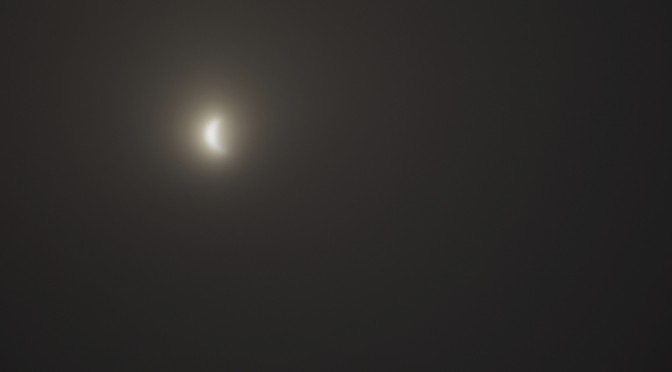Students and Molde locals witnessed three rare celestial events that took place across Europe this week.
By MONICA AKECH SYSTAD and ISABELLE CHANG TAN (photo)
Partial solar eclipse, spring equinox and the super moon unusually occurred within one week with over 90 % partial solar eclipse on Friday morning. A viewing party at Kringstadbukta – the beach close to campus – amidst grill sessions and games had been organized by the Erasmus Student Network (ESN), but was cancelled at the final minute due to bad weather.

The over two hour long partial solar eclipse reached it’s maximum at 10:54 am, but in Molde clouds blurred most of the view. This did not deter curious sky-watchers from witnessing and recording the phenomenal occurrence at the university college from classrooms, offices and at the balcony, while other students watched events unfolding in Svalbard on TV at the university college’s canteen where it had a total solar eclipse.

Solar glasses offered by Erasmus Student Network were put to good use as excited students lived with the realization that it will take 45 years until the next total eclipse will be sighted once again. According to scientists, total solar eclipses occur somewhere once every 18 months on average, but on average just once at any place on Earth every 360 years.
Solar eclipses happen when the moon blocks earth’s view from the Sun turning day into night. The Moon is 400 times smaller than the sun, but also 400 times closer to Earth than the Sun is. During solar eclipses it appears as the Moon is the same size as the Sun.
The next total solar eclipse will be sighted in America 21st of August 2017.

